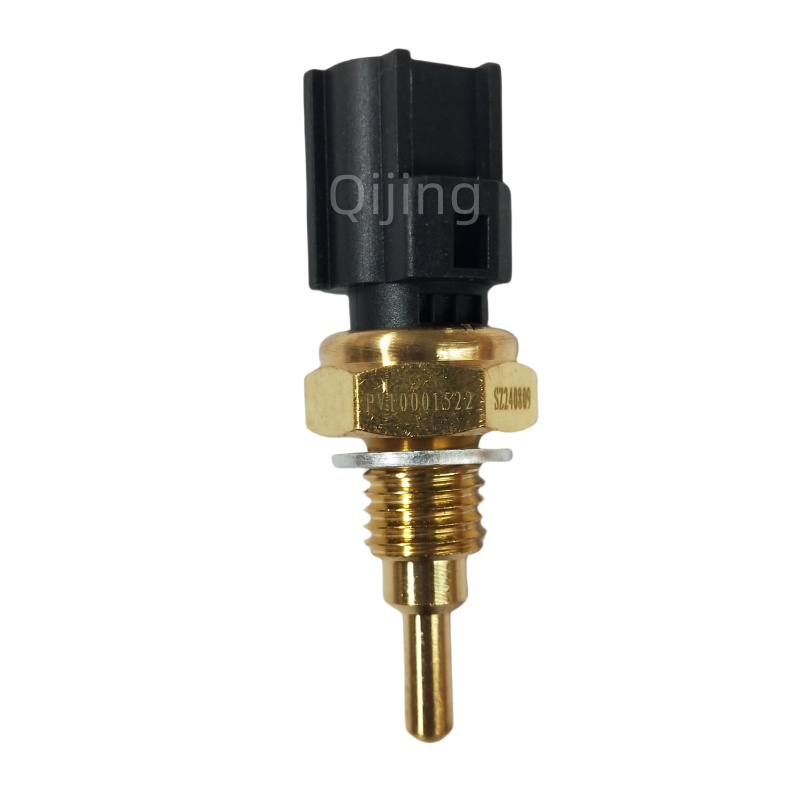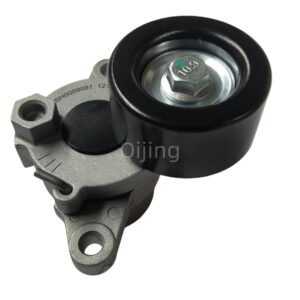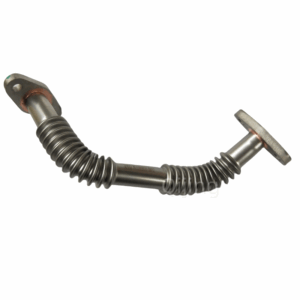Description
Cummins PV10001522 Coolant Temperature Sensor: Function, Importance, and Maintenance
A modern diesel engine relies heavily on accurate temperature data to perform efficiently. The Cummins PV10001522 coolant temperature sensor plays a crucial role in monitoring and controlling engine temperature to prevent overheating, improve fuel economy, and ensure emission compliance. As an engine expert, let’s examine the PV10001522 sensor’s working principle, design, installation, and troubleshooting from a technical perspective.
1. Understanding the Function of PV10001522 Coolant Temperature Sensor
The PV10001522 sensor measures the temperature of the engine coolant and sends this data to the Engine Control Unit (ECU). The ECU then adjusts several engine parameters such as:
-
Fuel injection timing and volume
-
EGR (Exhaust Gas Recirculation) operation
-
Cooling fan activation
-
Idle speed control
In short, this sensor enables the ECU to maintain an ideal engine temperature. When the coolant is too hot, the ECU triggers cooling mechanisms; when it’s cold, it modifies fuel delivery for smoother starting and reduced emissions.
2. Design and Construction
Cummins engineers designed the PV10001522 sensor for accuracy, durability, and stability under harsh engine conditions. Its structure typically includes:
-
A brass or stainless-steel housing for corrosion resistance.
-
A thermistor element (usually NTC type) that changes resistance with temperature.
-
A sealed electrical connector to prevent oil or coolant leakage.
-
High-temperature insulation for safe operation up to 150°C or higher.
This combination ensures the sensor remains accurate across a wide temperature range while withstanding vibration and pressure typical in diesel engines.
3. Common Applications and Compatibility
The PV10001522 coolant temperature sensor is used across several Cummins engine families, such as:
-
Cummins ISF2.8 / ISF3.8
-
QSB4.5 / QSB6.7
-
QSC8.3 / QSL9
-
B3.3 and 6BT variants
-
Some Foton and Dongfeng vehicles equipped with Cummins engines
This broad compatibility makes it a common replacement part for construction machinery, trucks, and generators.
When sourcing replacements, ensure you select genuine Cummins sensors or trusted OEM suppliers. Using counterfeit sensors can lead to inaccurate readings and even engine damage.
4. How the PV10001522 Sensor Works
At its core, the PV10001522 coolant sensor operates using a Negative Temperature Coefficient (NTC) thermistor. This means:
-
As coolant temperature increases, the thermistor’s resistance decreases.
-
The ECU measures voltage across the sensor to calculate the actual temperature.
Typical readings might include:
-
~2.5 kΩ at 80°C (normal operating range)
-
~10 kΩ at 20°C (cold start conditions)
The ECU uses these readings to optimize combustion, cooling, and fuel efficiency.
5. Symptoms of a Faulty Coolant Temperature Sensor
If the PV10001522 sensor fails, the engine’s ECU cannot accurately detect temperature. Common signs include:
-
Engine overheating or cooling fan not engaging
-
Poor fuel economy and high emissions
-
Hard starting when cold
-
Fluctuating temperature gauge readings
-
“Check Engine” light illumination
To confirm failure, technicians can test sensor resistance with a multimeter and compare it to factory specifications.
6. Installation and Maintenance Tips
When installing a replacement PV10001522 coolant sensor, follow these steps to ensure accuracy and reliability:
-
Disconnect the battery and allow the engine to cool.
-
Drain coolant below the sensor’s level to avoid spills.
-
Remove the faulty sensor using a suitable wrench.
-
Clean the mounting surface and apply thread sealant (if required).
-
Install the new sensor and torque it to specification.
-
Reconnect the electrical connector and refill coolant.
-
Bleed the system to remove air pockets.
It’s also important to use genuine Cummins coolant and maintain proper coolant levels, as contaminated coolant can damage both the sensor and the cooling system.
7. Long-Tail Keywords and SEO Optimization
To enhance the search ranking of this article, include relevant long-tail keywords such as:
-
“Cummins PV10001522 coolant sensor replacement”
-
“PV10001522 temperature sensor specifications”
-
“How to test Cummins coolant temperature sensor”
-
“PV10001522 compatible engines and models”
-
“Best OEM coolant temp sensor for Cummins ISF2.8”
These keywords target users searching for installation guides, specifications, and compatible parts, improving visibility in Google search results.
8. OEM vs Aftermarket: Which Is Better?
Although aftermarket versions exist, OEM Cummins sensors like PV10001522 provide better:
-
Temperature accuracy
-
Resistance to thermal cycling
-
Longer service life
-
Warranty protection
Using authentic parts ensures your engine’s ECU receives reliable data, extending the life of your engine and preventing expensive downtime.
9. Expert Tips for Better Cooling System Performance
For optimal results when replacing or maintaining your coolant sensor:
-
Always use OEM coolant sensors to guarantee compatibility.
-
Replace sensors every 80,000–100,000 km or as per Cummins service intervals.
-
Avoid over-tightening, which can crack the housing.
-
Regularly inspect wiring connectors for corrosion.
-
Maintain coolant quality with periodic flushing and proper antifreeze ratios.
10. Conclusion
The Cummins PV10001522 coolant temperature sensor may be small, but its impact on engine performance is enormous. It ensures precise control over fuel injection, cooling fan operation, and emission systems, keeping the engine efficient and reliable. Replacing a worn or faulty sensor with a genuine Cummins part guarantees accuracy and helps prevent costly overheating or engine failure.
More info about Cummins PV10001522 coolant temperature sensor, please visit our official website: www.best-cummins.com




